Lumbar Spinal Stenosis
Aug 22, 2019 Article by Physician Emeritus
Article by Physician EmeritusLumbar spinal stenosis is a condition characterized by either low back pain or numbness, and/or a weakness in the lower extremities that occurs with standing, walking, or arising from sitting to standing. Stenosis is a Greek word that describes an abnormal narrowing of a duct or canal. One of the functions of the lumbar spine is to provide a house or a conduit for nerves traveling from the spinal cord to outside the spine. The reader is referred to the description of spinal anatomy in the monograph Understanding How to Protect Your Lower Back, which can be provided at the patient’s request, or found on the louorthopedic.com web site. If these conduits become abnormally narrowed or restricted, then the nerves become pinched and may not function properly. The pressure on the nerves produces the symptoms of pain, numbness, or weakness. The majority of patients develop stenosis as a result of wear and tear and the body’s attempt to repair. The interlocking (facet) joints and ligaments that join the roof of one house to the other in response to strain become enlarged and cause narrowing of the conduits. Redundant disc tissue or bony enlargement (spurring) around the narrowed disc space can also constrict the conduits. Some patients have stenosis because they are born with or develop a small conduit during childhood and adolescence. Another contributing cause for stenosis can be the development of a deformity (an abnormal alignment) of the spine. Scoliosis, an S-shaped spine as viewed from the front, and spondylolisthesis are frequently associated with stenosis. Spondylolisthesis is a word derived from the Greek word spondylo meaning spine and olisthesis meaning to slide down a hill. As the vertebrae in the lower lumbar spine are tilted forward, the vertebra above has a tendency to slide forward upon the vertebra below upon which it rests. Therefore, forward slipping of the vertebra above upon the vertebra below is referred to as an olisthesis. If the vertebra above slides posteriorly with respect to the vertebra below, there is a retrodisplacement or retrolisthesis. These deformities (scoliosis, spondylolisthesis and retrodisplacement) alter the alignment of the vertebra and in association with wear in the disc (narrowing of the space between the vertebrae) narrow the conduits. Very often stenosis is a result of both enlargement of bony and soft tissues and deformity.
The fundamental treatment of stenosis relies on the awareness of its dynamic nature. That is the stenosis is more restricting with posture such as standing, walking or lying flat on the back. These positions are associated with a curve in the back similar to that of a sway-back horse. The stenosis is relieved or less constricting in positions like sitting or lying in a fetal position. Treatment of stenosis is simple. Avoid positions associated with sway in the lower back. Don’t stand. Don’t walk. Alternatively to these unacceptable solutions activities of standing, walking and arising can be modified. Stenosis in standing can be relieved by keeping some bend in the hip and knee by placing one foot up on a box or rail, or by leaning against a barstool or desktop while standing. Stenosis is relieved while walking by walking bent over such as leaning on a grocery cart or a walker. The constriction of stenosis with standing, walking and arising can also be relieved by training the abdominal and buttock muscles to take the sway out of the back. Simultaneous contraction of these muscle groups produces a pelvic tilt. Figure 1 illustrates a simple exercise that develops the ability to contract these muscles, however, performing this exercise alone is not sufficient. The patient has to convert this exercise into a posture. Figure 2 illustrates another exercise to develop this motor skill so that a patient can at anytime flatten the back relieving the stenosis. Once the pelvic tilt motor skill is developed the patients have to practice this skill every instant they are on their feet or when arising to the upright standing position. All patients with lumbar spinal stenosis have to devote themselves to the pelvic tilt posture by either using passive aids like the footstool, barstool or grocery cart, or by actively contracting the abdominal and gluteal muscles when upright if these aids are not available.
 Figure 1. While lying with hips and knees bent contract the abdominal and buttock muscles to flatten the back against the surface upon which you are lying.
Figure 1. While lying with hips and knees bent contract the abdominal and buttock muscles to flatten the back against the surface upon which you are lying.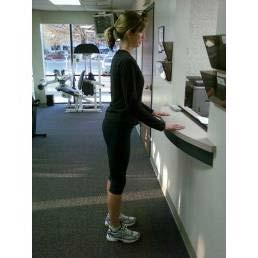
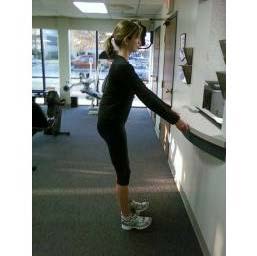 Figure 2. Step 1, stand next to a stable object such as the kitchen counter and hold onto the surface of the object while standing only on your heels (raise the balls of your feet off the floor). Step 2, ignore the tightness in your calves and thighs and feel the tightness of your abdominal and buttock muscles. Step 3 (not shown), while maintaining the tightness of the abdominal and buttock muscles, lower the balls of your feet back to the floor. You are now holding the pelvic tilt posture. Step 4, develop the ability to hold this posture at all times with standing and walking activities.
Figure 2. Step 1, stand next to a stable object such as the kitchen counter and hold onto the surface of the object while standing only on your heels (raise the balls of your feet off the floor). Step 2, ignore the tightness in your calves and thighs and feel the tightness of your abdominal and buttock muscles. Step 3 (not shown), while maintaining the tightness of the abdominal and buttock muscles, lower the balls of your feet back to the floor. You are now holding the pelvic tilt posture. Step 4, develop the ability to hold this posture at all times with standing and walking activities.Because there is no spinal cord in the lumbar spine, abnormal constriction of this area will almost never cause complete paralysis, but can cause weakness of muscles that may produce a limp, poor balance, difficulty arising from a low chair or climbing a stairway. With very severe constriction (stenosis) bladder function can be affected such that symptoms of urinary frequency or difficulty emptying the bladder may be related to the stenosis and not entirely the result of prostate problems in the male or a fallen bladder in the female. Usually there is ample-warning that lumbar spinal stenosis is worsening such that surgery can safely be postponed as long as the patient’s condition is monitored by a physician. Surgery is indicated when severe neurologic symptoms (weakness, loss of bladder control) are present or likely to develop in the near future. Surgery can be elected by the patient before severe neurologic problems are eminent if the patient wants to chance the opportunity of improving their ability to stand and walk. Surgical treatment in these situations may be limited to trimming these bony or soft tissues enlargements that have developed. However, if the alignment of the vertebra is compromised, realignment and fusion of spinal segments may be required to unpinch nerves and relieve painful and damaging nerve pressure.



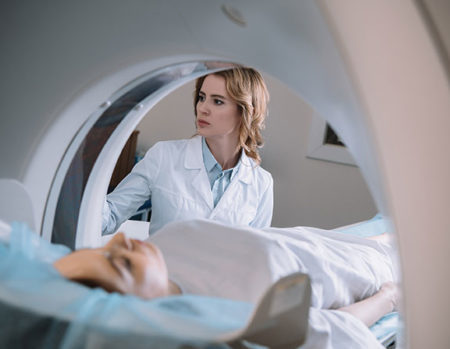 Our patients can receive MRI imaging onsite at both our Louisville and New Albany Clinics.
Our patients can receive MRI imaging onsite at both our Louisville and New Albany Clinics. Providing the latest advances in orthopedic surgery is our specialty.
Providing the latest advances in orthopedic surgery is our specialty.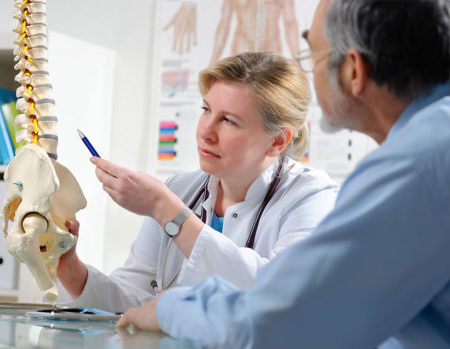 We take a unique, multidisciplinary approach to pain management.
We take a unique, multidisciplinary approach to pain management.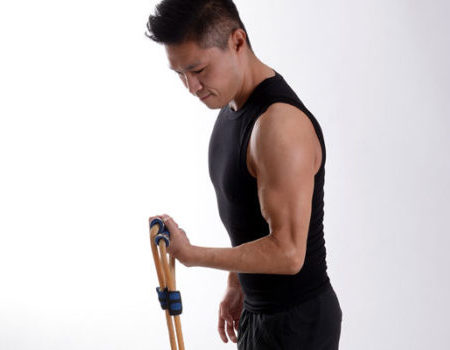 Our physical therapists use advanced techniques to help restore strength and mobility.
Our physical therapists use advanced techniques to help restore strength and mobility. 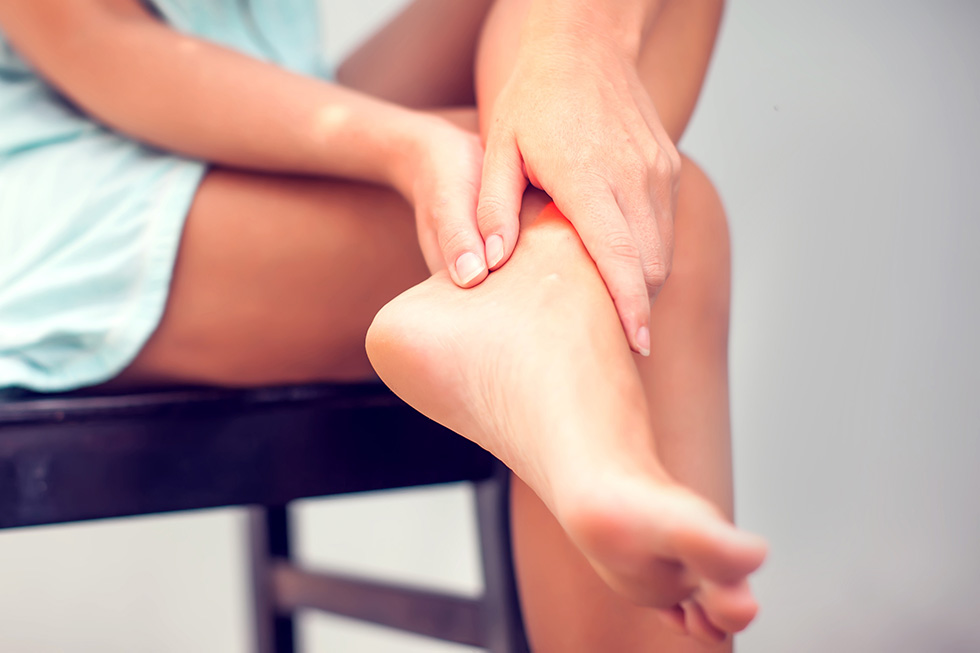 We provide comprehensive, conservative care for a wide variety of foot and ankle conditions.
We provide comprehensive, conservative care for a wide variety of foot and ankle conditions.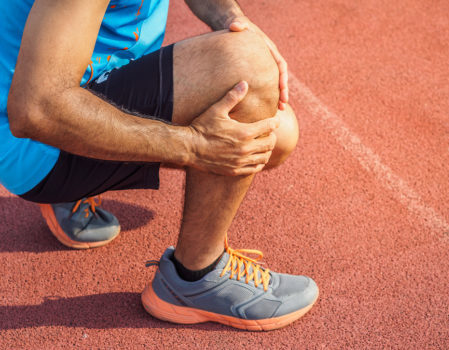 We offer same- and next-day care to patients with acute injuries.
We offer same- and next-day care to patients with acute injuries.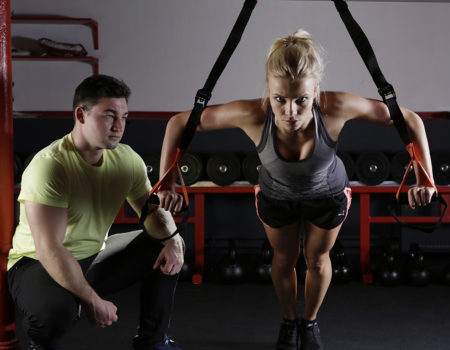 Get back in the game with help from our sports medicine specialists.
Get back in the game with help from our sports medicine specialists. 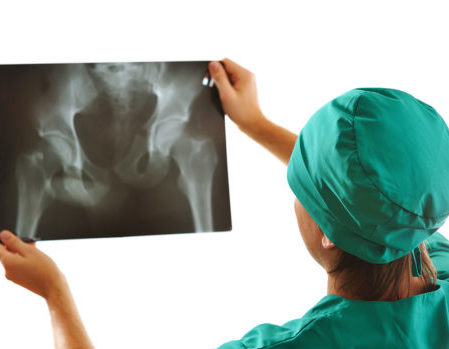 Our centers are equipped with a state-of-the-art digital X-ray machine.
Our centers are equipped with a state-of-the-art digital X-ray machine.